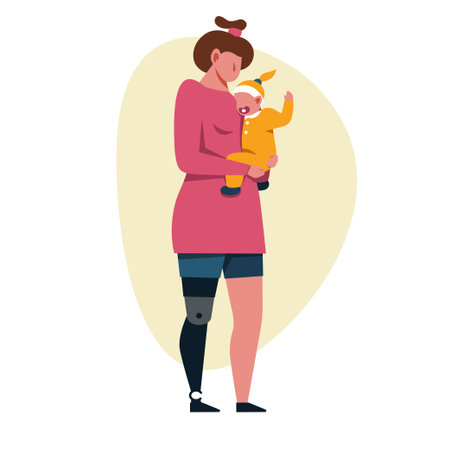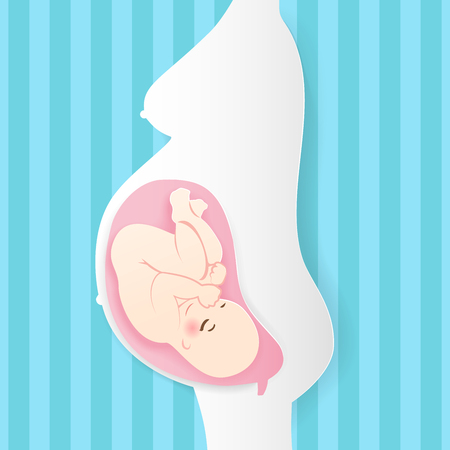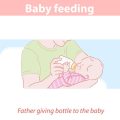Introduction: The Magic of Faces for Babies
From the very first moments of life, babies seem enchanted by faces. Whether it’s a parent peering lovingly into their crib or a stranger cooing from across the room, infants are naturally drawn to human faces more than any other object in their environment. This fascination isn’t just adorable—it’s actually crucial for their development. Faces captivate babies because they offer a rich source of social and emotional information, helping little ones begin to understand the world around them. By focusing on faces, infants start building the foundation for social bonding, communication, and empathy. In this article, we’ll explore why babies love faces so much and how this early attraction plays a vital role in shaping their ability to connect with others as they grow.
2. How Babies See and Recognize Faces
From the moment they enter the world, babies are drawn to faces. This isn’t just a cute coincidence—it’s rooted in how their brains and eyes develop right from birth. Even though newborns’ vision is blurry at first, science shows that they’re remarkably good at picking out faces compared to other objects. In fact, studies have found that babies as young as a few days old will spend more time looking at face-like patterns than anything else. This preference helps set the stage for crucial social and emotional learning.
The Science of Newborn Visual Development
Babies are born with underdeveloped eyesight, but their visual system is primed for social connection. At birth, infants can see best at about 8 to 12 inches away—the perfect distance to gaze at a caregiver’s face during feeding or cuddling. Their eyes are naturally attracted to high-contrast shapes and features, making facial outlines, eyes, and mouths especially interesting. Over the first several months, their vision sharpens rapidly, allowing them to distinguish subtle differences in facial expressions and eventually recognize familiar people.
Face Recognition: Early Abilities in Action
Even before they can talk or fully interact, babies show clear signs of recognizing faces. Here’s a look at some key milestones:
| Age | What Babies Can Do |
|---|---|
| 0–1 month | Prefer face-like patterns; focus on caregivers face |
| 2–3 months | Start to recognize familiar faces; respond to eye contact and smiles |
| 4–6 months | Distinguish between different emotional expressions |
Why Faces Matter for Social Growth
This early ability to pick out and focus on faces is more than just a visual skill—it lays the foundation for social bonding and emotional development. When babies lock eyes with caregivers or respond to smiles, they’re not only learning who their trusted adults are but also starting to understand feelings and relationships. As their face-recognition skills grow, so does their ability to connect with others, paving the way for healthy attachment and communication.

3. Faces and Social Connection
Babies are naturally drawn to faces, and this preference plays a crucial role in their social and emotional development. By focusing on the faces of caregivers, infants begin to learn about emotions through subtle visual cues like smiles, frowns, or raised eyebrows. These early interactions lay the foundation for understanding feelings—both their own and those of others. When a baby locks eyes with a parent or mimics their expressions, they’re not just having fun; they’re learning how to connect and communicate long before they can speak. This attention to faces also helps babies feel safe and understood. When caregivers respond with warmth and eye contact, babies sense comfort and trust, which encourages them to explore more social interactions. Over time, these repeated face-to-face exchanges teach infants essential skills such as recognizing emotions, interpreting nonverbal signals, and eventually using facial expressions themselves to express happiness, curiosity, or frustration. In essence, a baby’s fascination with faces is more than just adorable—it’s a powerful tool for building bonds and kickstarting their journey into the world of communication.
4. Learning Emotions Through Facial Expressions
Babies are natural observers, and faces are their favorite things to watch. From the very first weeks of life, infants begin to interpret the world by reading facial cues. This early fascination is more than just curiosity—it’s an essential part of their social and emotional development. As babies interact with parents, siblings, and caregivers, they carefully watch faces for signals about how others are feeling and what might happen next. These observations help them understand emotions, moods, and intentions long before they can speak or even fully comprehend words.
How Babies Decode Facial Expressions
Babies use a combination of instinct and learning to decode what different facial expressions mean. For example, when a caregiver smiles, babies often smile back—a behavior known as social smiling. Conversely, if someone frowns or shows distress, infants may become upset or anxious themselves. Over time, these repeated interactions teach babies the basics of human emotion.
Common Facial Cues Babies Learn
| Facial Expression | Associated Emotion | Typical Baby Response |
|---|---|---|
| Smile | Happiness/Contentment | Smiling back, cooing |
| Frown | Sadness/Discomfort | Crying, looking away |
| Wide Eyes | Surprise/Curiosity | Paying closer attention |
| Pursed Lips | Disapproval/Uncertainty | Becoming quiet or cautious |
The Role of Repetition and Consistency
Consistency in facial expressions helps babies predict outcomes and learn trust. When caregivers regularly respond to a baby’s needs with warm, happy faces, babies feel secure and understood. This builds a foundation for healthy emotional bonds and better social skills later in life. Through thousands of tiny daily exchanges—smiles at bath time, reassuring looks during feeding, playful winks during games—babies learn not only what emotions look like but also how relationships work.
5. The Role of Face-to-Face Interactions in Emotional Development
When it comes to understanding why babies are so fascinated by faces, its impossible to overlook the power of face-to-face interactions. Responsive facial exchanges—like smiling, cooing, and making eye contact—are more than just adorable moments; they are essential building blocks for a babys emotional development. These early social experiences teach infants that the world is a safe and loving place. When a caregiver smiles or mirrors a babys expressions, it sends a powerful message: “You matter, and I am here for you.” This sense of security forms the foundation for healthy emotional growth throughout childhood.
Babies naturally seek out faces because they are wired to learn from them. Every time a parent or loved one locks eyes with their baby, responds to their sounds, or shares a big grin, the baby’s brain is firing up important pathways related to trust and attachment. In fact, research shows that babies who experience regular, positive face-to-face engagement tend to develop stronger self-esteem and better social skills later in life. It’s not just about recognizing familiar faces—it’s about feeling seen and understood.
American families often cherish these bonding moments during daily routines like feeding time, playtime, or bedtime stories. Whether it’s an exaggerated “peek-a-boo” or singing a silly song while maintaining eye contact, these rituals help babies feel loved and connected. Even brief moments of shared attention can have a lasting impact on a child’s ability to manage emotions and build relationships as they grow older.
6. Tips for Supporting Your Baby’s Social and Emotional Growth
Face-to-face interactions are powerful tools for nurturing your baby’s social and emotional development. Here are some practical and culturally relevant tips for American parents to encourage these important skills at home:
Make Eye Contact Part of Your Routine
Simple daily moments—like feeding, diaper changes, or playtime—are perfect opportunities to make eye contact with your baby. Smile, exaggerate facial expressions, and talk gently. These actions help your baby learn how emotions are expressed and foster a sense of security.
Talk, Sing, and Read Together
American families often bond through music, stories, and conversation. Narrate your day, sing favorite lullabies, or read picture books while facing your baby. This not only introduces language but also helps babies associate words with facial cues and emotions.
Embrace Family Diversity
Introduce your baby to a variety of faces within your community—whether that’s grandparents on video calls, friends at the park, or neighbors during walks. Seeing different faces helps babies develop social flexibility and cultural awareness from an early age.
Limit Screen Time and Prioritize Real Faces
While technology is part of modern American life, prioritize in-person interactions over screens whenever possible. Babies benefit most from real-life facial expressions and responses; too much screen time can limit these rich learning experiences.
Create Calm, Responsive Environments
A calm environment where you respond warmly to your baby’s cues helps them feel safe to explore social connections. Even on busy days, taking a few minutes for undistracted face-to-face time can make a big difference in building trust and emotional intelligence.
Cherish Everyday Moments
You don’t need fancy toys or elaborate routines—your loving attention is what matters most. Enjoy those little moments of connection: goofy faces during bath time, shared giggles in the car seat mirror, or gentle reassurance when they’re upset. These simple acts lay the foundation for lifelong social and emotional health.

